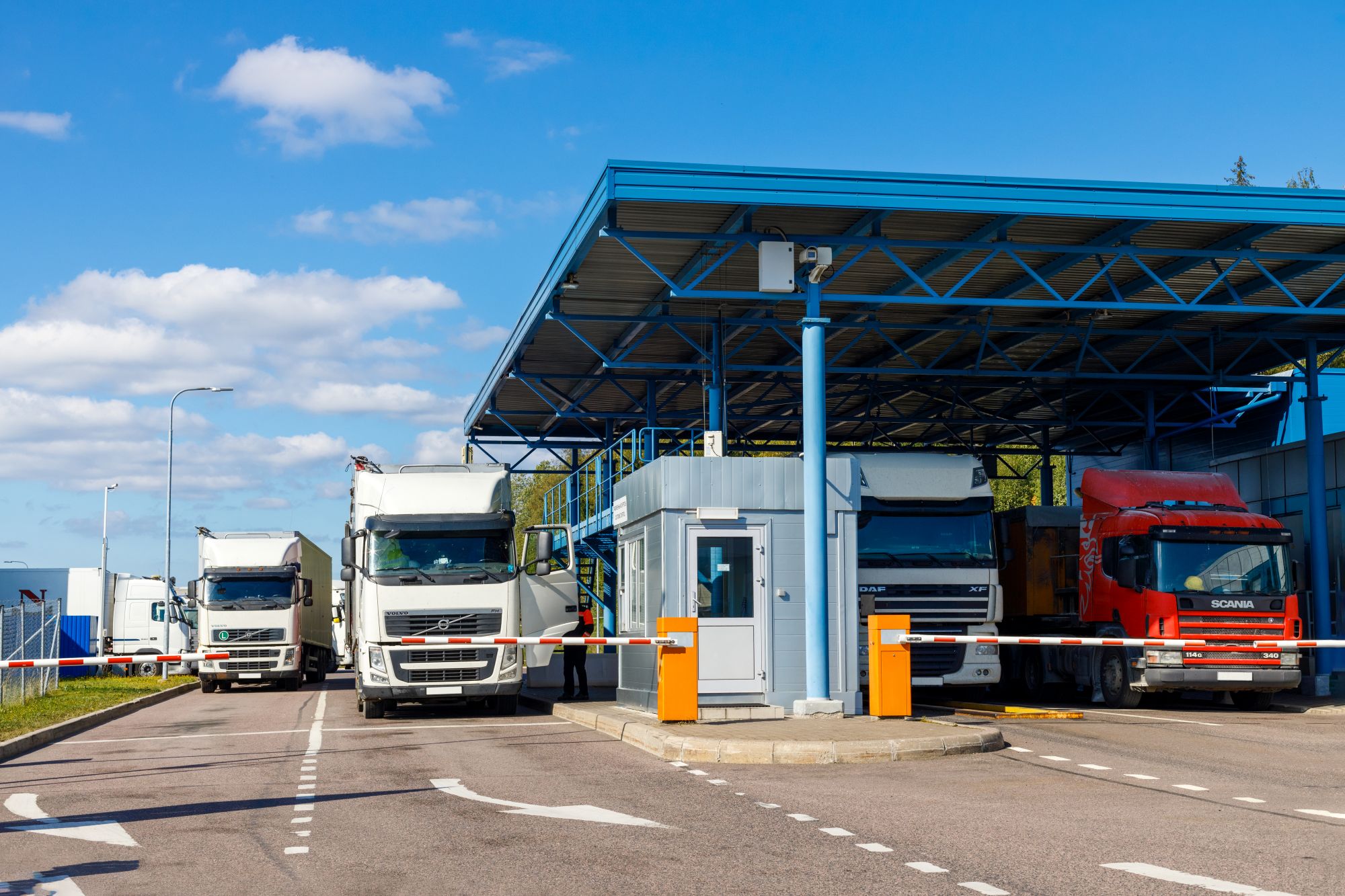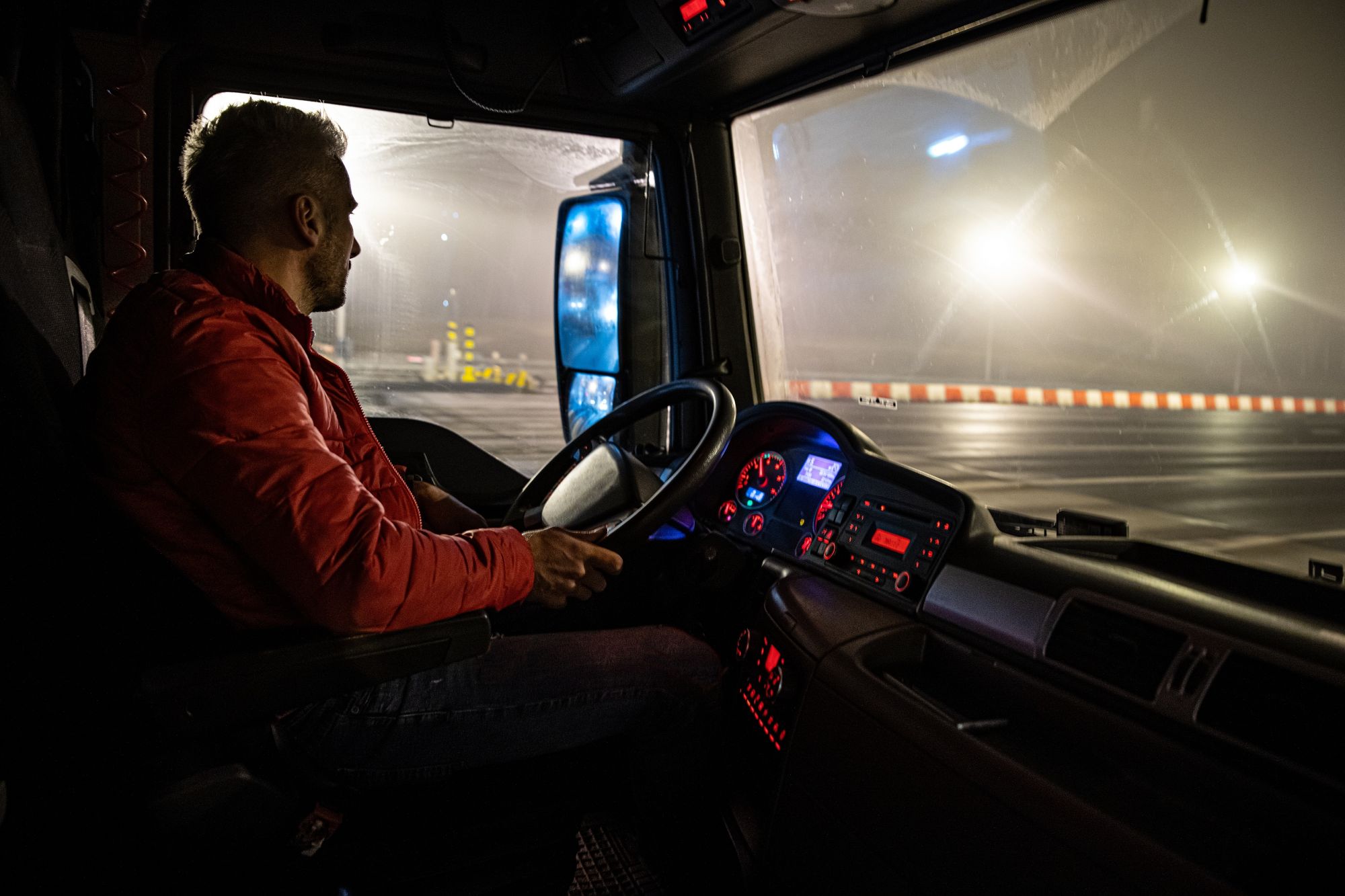
Guest
Ponovno odprtje poljsko-ukrajinske meje: Kaj morajo vedeti upravljavci voznega parka
Ustvarjeno: 18. 06. 2025
•
Posodobljeno: 20. 06. 2025
Po večmesečnih motnjah tovorni promet med Poljsko in Ukrajino spet poteka nemoteno. Vendar pa morajo upravljavci voznih parkov zaradi še vedno prisotnih napetosti in nevarnosti ponovnih blokad ostati pozorni na tveganja in biti pripravljeni zaščititi dobro počutje voznikov na obeh straneh meje.
V tem članku je pojasnjeno, kaj je povzročilo motnje, kako so vplivale na voznike in kakšne ukrepe lahko sprejmete, da bi zmanjšali posledice, če bi se protestni ukrepi ponovili.
Kaj je povzročilo blokado poljsko-ukrajinske meje leta 2024?
Razmere so se začele konec leta 2023, ko so poljski vozniki tovornjakov začeli protestirati na glavnih mejnih prehodih. Trdili so, da je odločitev EU, da ukine zahteve glede dovoljenj za ukrajinske prevoznike, ki je bila uvedena kot začasni vojni ukrep, povzročila pritok cenejših prevoznikov, ki so spodkopavali poljska podjetja.
Protesti so se stopnjevali, blokirali so ključne tovorne poti v Ukrajino in na tisoče vozil je ostalo v več kilometrov dolgih kolonah. Na vrhuncu blokade je na meji obtičalo več kot 5 000 tovornjakov, nekateri so na prehod čakali več kot teden dni. Tudi neukrajinski vozniki EU so trpeli zaradi dolgih zamud, napornih urnikov in slabih pogojev.
Kar se je začelo kot logistični spor, je preraslo v širši protest poljskih avtoprevoznikov zaradi ukrajinskega uvoza, dostopa do trga in vpliva izrednih prometnih ukrepov EU. Kmalu so se jim pridružili tudi poljski kmetje, ki so bili razočarani zaradi vpliva ukrajinskih kmetijskih proizvodov na domače cene.
Poljski vozniki so kritizirali tudi ukrajinski elektronski sistem čakanja v vrstah (https://www.pravda.com.ua/eng/news/2023/11/29/7430863/) za mejne prehode - znan kot eCherha - in trdili, da so zaradi njega prevozniki iz EU v slabšem položaju. Čeprav je bil sistem zasnovan za racionalizacijo tovornega prometa, saj je prevoznikom omogočal vnaprejšnjo rezervacijo slotov za prehode, so poljski prevozniki trdili, da je ukrajinskim podjetjem omogočal večjo prožnost in hitrejši dostop. Zaradi jezikovnih ovir, omejenega povezovanja z logističnimi sistemi EU in nedoslednega izvajanja so številni vozniki EU na meji čakali dlje, kar je še povečalo občutek nepravične obravnave in prispevalo k širšim nemirom.
Časovni potek blokad poljsko-ukrajinske meje
november 2023: Protesti se začnejo na mejnih prehodih Dorohusk, Hrebenne in Korczowa.
December 2023: Blokiranih je še več prehodov, tudi Medyka; v čakalnih vrstah umrejo trije ukrajinski vozniki.
Januar 2024: Poljska vlada sklene dogovor o prekinitvi blokade do marca.
Marca-aprila 2024: Občasne blokade se nadaljujejo na manjših prehodih.
Maj 2025: V Yahodyn-Dorohusku se je začela nova štirimesečna blokada, vendar jo je sodišče razveljavilo.
June 2025: Vsi glavni mejni prehodi ostajajo odprti, vendar tveganje za motnje v prihodnosti ostaja.
Kaj poljska vlada počne za izboljšanje razmer?
Poljska vlada se je na motnje in njihove širše posledice odzvala proaktivno. Mejni prehodi z Ukrajino so bili opredeljeni kot kritična infrastruktura, kar jim zagotavlja večjo zaščito pred prihodnjimi blokadami in pomaga zagotoviti nadaljnji pretok tovora, humanitarne pomoči in vojaške podpore.
Ustanovljen je bil tudi nov Svet za sodelovanje z Ukrajino, ki naj bi na splošno okrepil vezi med državama. Del njegovih nalog je izboljšati usklajevanje na področju trgovine in prometa. Hkrati Poljska vlaga v infrastrukturo na vzhodni meji in sodeluje z uradniki EU, da bi dosegla pravičnejše pogoje za poljske prevoznike. Čeprav ti ukrepi morda ne bodo rešili razmer čez noč, so znak dolgoročne zavezanosti k stabilnosti in strukturiranemu dialogu.

Vpliv na voznike
Blokada je ustvarila nesprejemljive pogoje za poklicne voznike. Mnogi so dneve ali tedne preživeli v svojih kabinah brez dostopa do stranišč, hrane in tekoče vode. Nekateri so obtičali pri nizkih temperaturah brez ogrevanja ali zavetja.
Med blokado so umrli trije ukrajinski vozniki, pri čemer naj bi k temu prispevala izčrpanost in nezdravljene zdravstvene težave.
Motnje so povzročile tudi veliko duševno in čustveno obremenitev, zlasti za ukrajinske voznike, ki so med vojno skušali priti domov ali se vrniti. Zamude niso vplivale le na trgovino, temveč tudi na pretok goriva, pomoči in vojaškega blaga, ki je ključnega pomena za ukrajinsko nacionalno obrambo.
Medtem ko so poljski protestniki vztrajali, da so vozila humanitarne in vojaške pomoči lahko prečkala mejo, poročila ukrajinskih oblasti kažejo, da to ni vedno veljalo.
Te razmere niso bile travmatične le za voznike, ampak so razkrile tudi vrzeli v upravljanju tveganj voznega parka in načrtovanju ukrepov ob nesrečah. Upravljavci morajo motnje na mejah zdaj obravnavati kot stalno grožnjo.
Kaj morajo vedeti upravljavci voznih parkov
Čeprav so se razmere stabilizirale, so napetosti med poljskimi prevozniki, ukrajinskimi prevozniki in politiko EU še vedno nerešene. Upravljavci voznih parkov, ki delujejo v regiji ali v njeni bližini, morajo biti pozorni na možnost nadaljnjih protestnih akcij - zlasti v času sezonskih pritiskov ali pregledov politike EU.
Tukaj so priporočila skupine SNAP za učinkovito obvladovanje razmer:
1. Spremljanje razmer na poljsko-ukrajinski meji
Spremljajte novice poljskih in ukrajinskih logističnih združenj ter vladnih virov. Naročite se na opozorila o prometu na meji in sledite zaupanja vrednim logističnim partnerjem za posodobitve v realnem času.
2. Načrtujte prilagodljive poti
Pripravite načrte za nepredvidljive razmere, ki vozila preusmerijo prek Madžarske, Slovaške ali Romunije, če bodo prehodi med Poljsko in Ukrajino ponovno blokirani.
3. Podpora blaginji voznika
Poskrbite, da bodo vaša tovorna vozila opremljena z osnovnimi potrebščinami: hrano, vodo, napajalniki in medicinskimi pripomočki.
V času nemirov je dostop do varnega parkirišča za tovornjake na Poljskem bistvenega pomena, da so vaši vozniki varni, spočiti in izven cest. Voznike opremite z najnovejšimi informacijami o varnih parkiriščih za tovornjake in počivališčih na njihovi poti.
Naša aplikacija intruck ima interaktivni zemljevid parkirišč za tovornjake z 11.000 ponudniki storitev za težka tovorna vozila po vsej Evropi, vključno s Poljsko, Madžarsko in Slovaško. Gre za enostavno orodje za iskanje varnih počivališč za tovornjake na Poljskem, ki je še posebej dragoceno v času protestnih akcij.
Čeprav aplikacija trenutno ne ponuja rezerviranih parkirišč za tovornjake v Ukrajini, lahko ukrajinski prevozniki in vozniki uporabljajo intruck za iskanje zanesljivih počivališč v EU med potovanji na dolge razdalje ali v času motenj.
4. Rezervirajte rešitve za varno parkiranje tovornjakov na Poljskem
Zaradi povečanega povpraševanja v obdobjih motenj je nujna predhodna rezervacija. Vozniki lahko z intruckom tudi vnaprej poiščejo in rezervirajo zaupanja vredna parkirišča za tovornjake na Poljskem. Ne glede na to, ali vaša vozila potujejo globoko v vzhodno Evropo ali se vračajo proti zahodu, omogoča vašim voznikom dostop do parkirišč za tovornjake v bližini Varšave in drugih prometno obremenjenih območij.
5. Redno komunicirajte z vozniki
Določite urnik prijave, zlasti če se pričakuje daljše čakanje ali preusmeritve. Voznikom zagotovite, da je njihovo dobro počutje prednostna naloga, in jim zagotovite podporo, če se soočijo z nepričakovanimi zamudami. Če je mogoče, vnaprej predlagajte varna parkirišča za tovornjake v Ukrajini, da bodo vedeli, kje si lahko vzamejo odmor.
Pogled naprej
Ponovno odprtje meje med Poljsko in Ukrajino je dobrodošla novica za flote, ki delujejo v vzhodni Evropi. Vendar je treba biti pripravljen, ker politične napetosti še niso odpravljene.
"Razmere se hitro spreminjajo," pravi Nick Renton, vodja evropske strategije in poslovnega razvoja pri družbi SNAP. "Zaradi možnosti nadaljnjih motenj na poljsko-ukrajinski meji priporočamo, da upravljavci voznih parkov pripravijo zanesljive načrte za prednostno obravnavo dobrega počutja voznikov in zmanjšanje operativnih tveganj. To vključuje vključitev prožnosti v urnike dostave, zagotavljanje osnovnih zalog v vozilih in zagotavljanje dostopa voznikom do varnih parkirišč za tovornjake.
"Naša mreža rezerviranih postajališč za tovornjake po Evropi in na Poljskem vam omogoča, da ostanete prilagodljivi, in zagotavlja mirnost tako prevoznikom kot voznikom, kadar so razmere na terenu nepredvidljive."
Oglejte si interaktivni zemljevid varno parkirišče za tovornjake na Poljskem danes.



